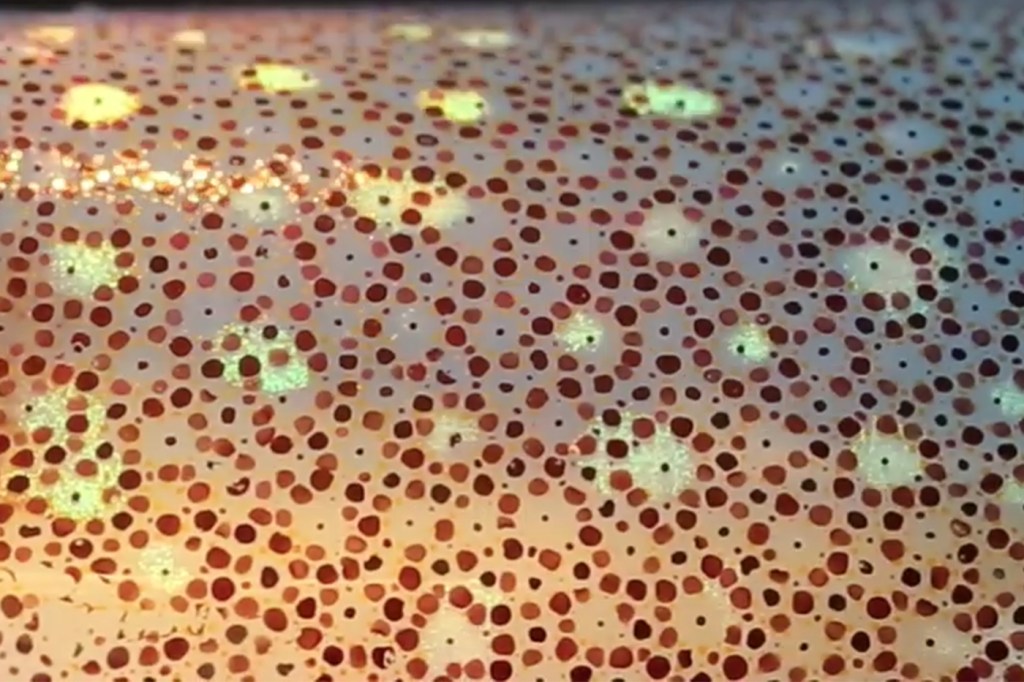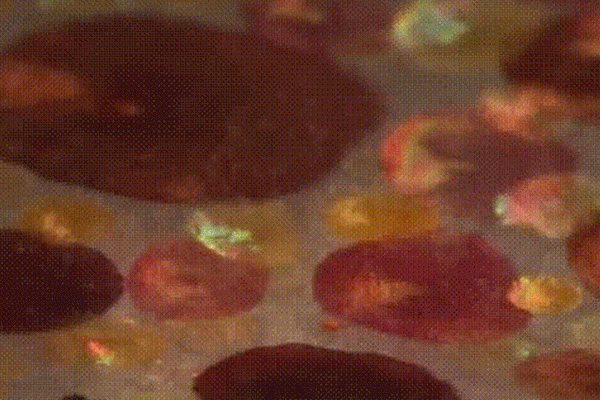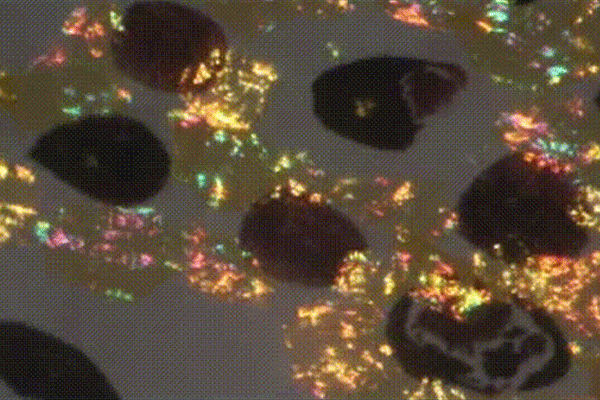The secret of a squid’s ability to change colors may lie in an unexpected sparkle on its skin

In the blink of an eye, squid can change from sandy brown to vibrant red or ripple with bright metallic rainbows. Their color-changing abilities (and those of their fellow cephalopods, octopus and cuttlefish) are more sophisticated than any found in the animal kingdom.
By copying the inner workings of cephalopod skin, researchers hope to find ways to improve camouflaging devices or design color-changing materials and cosmetics. But that ultimate goal is still a long way off.

Courtesy of Stephen Senft
“People have been trying to build devices that can mimic cephalopod color change for a long time by using off-the-shelf components,” says Leila Deravi, an assistant professor of chemistry and chemical biology at Northeastern, whose lab led the study. “Nobody has come anywhere near the speed and sophistication of how they actually work.”
Deravi has been working to investigate squid camouflage on a molecular level with a large, interdisciplinary team of researchers co-led by Roger Hanlon, a senior scientist at the Marine Biological Laboratory. Their recently published work on the longfin squid, Doryteuthis pealeii, reveals an entirely new aspect of the squid’s color-changing abilities, bringing researchers one step closer to being able to replicate it.
The squid’s skin contains two types of structures that manipulate light to produce various colors. Organs near the surface, called chromatophores, use elastic sacs of pigment that stretch rapidly into discs of color when the muscles around them contract. When light strikes the pigment granules, they absorb the majority of the wavelengths and reflect back only a narrow band of color.

Leila Deravi works in her lab in Hurtig Hall on Feb. 9, 2018. Photo by Adam Glanzman/Northeastern University
Deeper in the skin, cells called iridophores reflect all the light that hits them. By scattering this light, a method known as structural coloration, they bounce back a bright sheen of iridescence.
For decades, all available data had indicated that these separate structures could only produce one type of coloration or the other: pigmentary or structural. But when the researchers looked closely at the squid chromatophores, they spotted iridescence shimmering in perfect alignment with the pigment.
“In that top layer, embedded into the chromatophore organ, is structural coloration,” says Hanlon. “No one had found anything like that.”
Hanlon, who has spent the better part of four decades studying cephalopod biology, went back through his old Kodachrome slides of chromatophores. Sure enough, he found a photograph of blue iridescence reflecting from a chromatophore. At the time, he had assumed the shimmering blue was from an iridophore deeper in the skin.
“I saw this in 1978, and I didn’t realize what I was looking at,” Hanlon says. “It’s incredible.”

Courtesy of Stephen Senft
This time, the researchers are sure the iridescence is coming from the chromatophore. The team, which included MIT and the University of New Hampshire, found the proteins that create iridescence, appropriately known as reflectins, in the cells surrounding the pigment sacs.
This unexpected discovery, that the chromatophore is using both pigmentary and structural coloration to create its dynamic effects, opens up new opportunities for biologists and chemists alike.
“We kind of broke up the known paradigm of how the skin works in the cephalopod world,” Hanlon says.
Biologists like Hanlon can use this new information to better understand these fascinating species. Applied chemists like Deravi can use it to work on reverse-engineering the color-change abilities of cephalopods for human use.
“We’re piecing together a roadmap, essentially, for how these animals work,” Deravi says. “Our ultimate goal is to try to create something like a material, a wearable device, a painting or a coating, that can change color very quickly like these animals do.
“It’s not as far-fetched of a goal today as it was even three years ago.”
For media inquiries, please contact Shannon Nargi at s.nargi@northeastern.edu or 617-373-5718.





